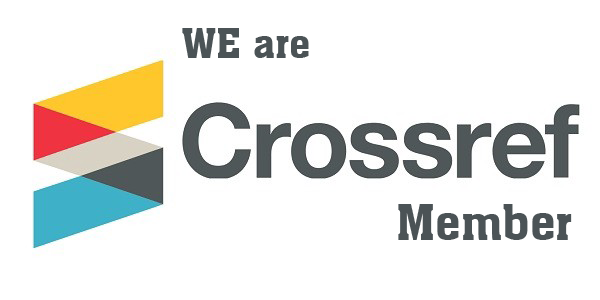Determination of Heavy Metals in Henna Leaves and Cosmetic Henna Products Available in Zliten, Libya
DOI:
https://doi.org/10.54172/mjsc.v37i2.372Keywords:
Heavy metal, Henna leaves, Henna Products, Toxic levelsAbstract
Henna is widely used by Libyan women as a cosmetic, which may contain lead (pb), cadmium (Cd) and other toxic heavy metals. The purpose of this study was to determine heavy metal content of seven henna products, imported and locally produced in Zliten, Libya. An analytical method was performed using Atomic Absorption Spectrophotometer (AAS). In terms of heavy metal content determination, the results revealed a significant difference between henna leaves and cosmetic henna samples. The premixed henna sample H2 had the highest heavy metal concentrations with a high level of lead (6.952ppm), exceeding the WHO's maximum limit and the (ASEAN) Guidelines on Limits of Contaminants for Cosmetics Heavy metal maximum limits, Lead (Pb) is 1 ppm. Nickel (Ni) levels in (H4=5.201ppm) and (H6=2.023ppm ) henna samples were found to be above the WHO's limit of 1.68ppm. The results indicated that such cosmetics expose consumers to high levels of Pb and Cu, and hence to potential health risks. Thus, investigating the sources and effects of heavy metals in such cosmetics is strongly advised.
Downloads
References
Aktas Sukuroglu, A., Battal, D., & Burgaz, S. (2017). Monitoring of Lawsone, p‐phenylenediamine and heavy metals in commercial temporary black henna tattoos sold in Turkey. Contact dermatitis, 76(2), 89-95. DOI: https://doi.org/10.1111/cod.12702
Alissa, E. M., & Ferns, G. A. (2011). Heavy metal poisoning and cardiovascular disease. Journal of toxicology, 2011. DOI: https://doi.org/10.1155/2011/870125
Bobaker, A. M., Alakili, I., Sarmani, S. B., Al-Ansari, N., & Yaseen, Z. M. (2019). Determination and assessment of the toxic heavy metal elements abstracted from the traditional plant cosmetics and medical remedies: case study of Libya. International journal of environmental research and public health, 16(11), 1957. DOI: https://doi.org/10.3390/ijerph16111957
Borowska, S., & Brzóska, M. M. (2015). Metals in cosmetics: implications for human health. Journal of applied toxicology, 35(6), 551-572. DOI: https://doi.org/10.1002/jat.3129
Chaudhary, G., Goyal, S., & Poonia, P. (2010). Lawsonia inermis Linnaeus: a phytopharmacological review. Int J Pharm Sci Drug Res, 2(2), 91-98.
Control, C. f. D., & Prevention. (2005). Preventing lead poisoning in young children. http://www. cdc. gov/nceh/lead/Publications/PrevLeadPoisoning. pdf.
DeLeo, V. A. (2006). p-Phenylenediamine. Dermatitis, 17(2), 53-55.
Fahad, A. S. (2016). Henna beyond skin arts: literatures review.
Gevrenova, R. (2010). Determination of natural colorants in plant extracts by high performance liquid chromatography. Journal of the Serbian Chemical Society, 75(7), 903-915. DOI: https://doi.org/10.2298/JSC091027071G
Kang, I. J., & Lee, M. H. (2006). Quantification of para‐phenylenediamine and heavy metals in henna dye. Contact dermatitis, 55(1), 26-29. DOI: https://doi.org/10.1111/j.0105-1873.2006.00845.x
Khattak, M. I., & Khattak, M. I. (2011). Study of heavy trace metals in some medicinal–herbal plants of Pakistan. Pak. J. Bot, 43(4), 2003-2009.
Kollmeier, H., Seemann, J., Wittig, P., Rothe, G., & Müller, K.-M. (1990). Cadmium in human lung tissue. International archives of occupational and environmental health, 62(5), 373-377. DOI: https://doi.org/10.1007/BF00381367
Krejpcio, Z. (2001). Essentiality of chromium for human nutrition and health. Polish Journal of Environmental Studies, 10(6), 399-404.
Kumar, K. S., & Kathireswari, P. (2016). Biological synthesis of Silver nanoparticles (Ag-NPS) by Lawsonia inermis (Henna) plant aqueous extract and its antimicrobial activity against human pathogens. Int. J. Curr. Microbiol. App. Sci, 5(3), 926-937. DOI: https://doi.org/10.20546/ijcmas.2016.503.107
Ozbek, N. (2018). Elemental analysis of henna samples by MP AES. Journal of the Turkish Chemical Society, Section A: Chemistry, 5(2), 857-868. DOI: https://doi.org/10.18596/jotcsa.423820
Popoola, O., Bisi-Johnson, M., Abiodun, A., & Ibeh, O. (2013). Heavy metal content and antimicrobial activities of some naturally occurring facial cosmetics in Nigeria. Ife journal of science, 15(3), 637-644.
Singh, M., Jindal, S., Kavia, Z., Jangid, B., & Khem, C. (2005). Traditional methods of cultivation and processing of henna. Henna, cultivation, improvement and trade, 21-34.
Swift, J. A. (1997). Fundamentals of human hair science. Micelle Press.
Umar, M., & Caleb, H. (2013). Analysis of metals in some cosmetic products in FCT-Abuja, Nigeria. International Journal of Research in Cosmetic Science, 3(2), 14-18.
Zafar Alam, M., SMS, Z., Khan, U., Obaid, A., Sarwat, J., Aftab, S., Rabail, Z., & Misbah, Z. (2009). Kohl [SURMA]: retrospect and prospect.
Downloads
Published
How to Cite
License
Copyright (c) 2022 wafaa Khalleefah

This work is licensed under a Creative Commons Attribution-NonCommercial 4.0 International License.
Copyright of the articles Published by Almukhtar Journal of Science (MJSc) is retained by the author(s), who grant MJSc a license to publish the article. Authors also grant any third party the right to use the article freely as long as its integrity is maintained and its original authors and cite MJSc as original publisher. Also they accept the article remains published by MJSc website (except in occasion of a retraction of the article).













